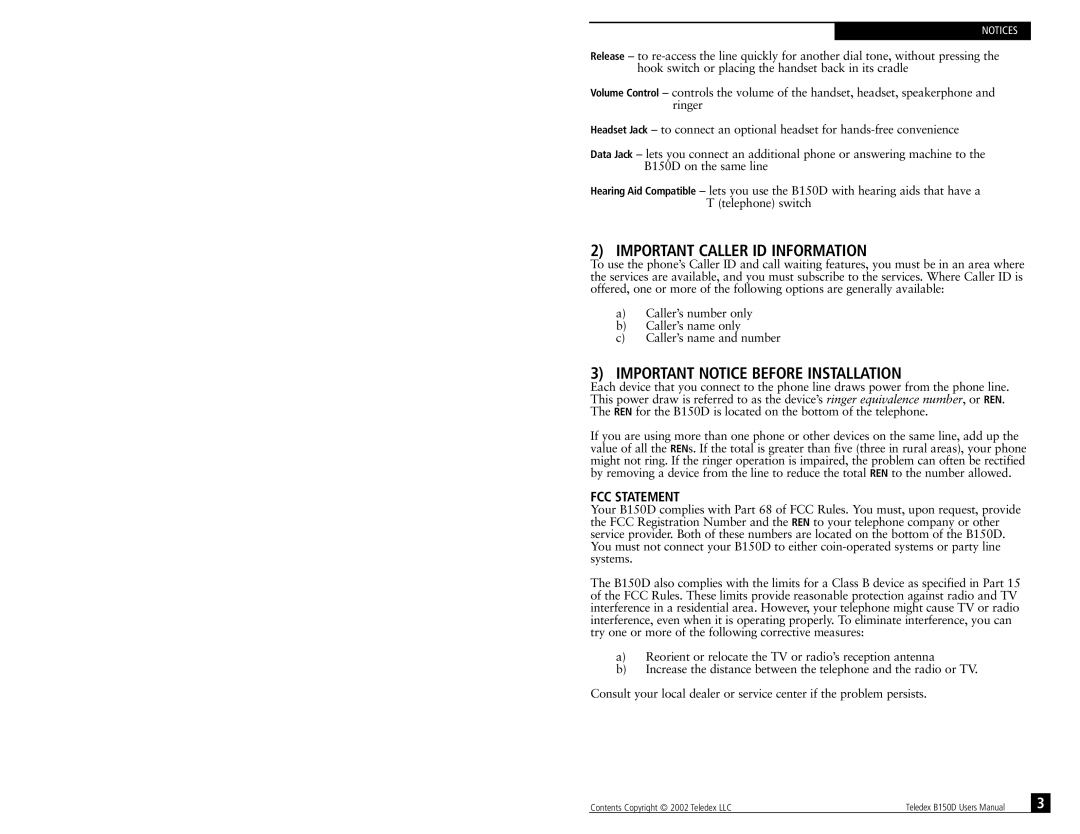NOTICES
Release – to
Volume Control – controls the volume of the handset, headset, speakerphone and ringer
Headset Jack – to connect an optional headset for
Data Jack – lets you connect an additional phone or answering machine to the B150D on the same line
Hearing Aid Compatible – lets you use the B150D with hearing aids that have a T (telephone) switch
2) IMPORTANT CALLER ID INFORMATION
To use the phone’s Caller ID and call waiting features, you must be in an area where the services are available, and you must subscribe to the services. Where Caller ID is offered, one or more of the following options are generally available:
a)Caller’s number only
b)Caller’s name only
c)Caller’s name and number
3) IMPORTANT NOTICE BEFORE INSTALLATION
Each device that you connect to the phone line draws power from the phone line. This power draw is referred to as the device’s ringer equivalence number, or REN. The REN for the B150D is located on the bottom of the telephone.
If you are using more than one phone or other devices on the same line, add up the value of all the RENs. If the total is greater than five (three in rural areas), your phone might not ring. If the ringer operation is impaired, the problem can often be rectified by removing a device from the line to reduce the total REN to the number allowed.
FCC STATEMENT
Your B150D complies with Part 68 of FCC Rules. You must, upon request, provide the FCC Registration Number and the REN to your telephone company or other service provider. Both of these numbers are located on the bottom of the B150D. You must not connect your B150D to either
The B150D also complies with the limits for a Class B device as specified in Part 15 of the FCC Rules. These limits provide reasonable protection against radio and TV interference in a residential area. However, your telephone might cause TV or radio interference, even when it is operating properly. To eliminate interference, you can try one or more of the following corrective measures:
a)Reorient or relocate the TV or radio’s reception antenna
b)Increase the distance between the telephone and the radio or TV.
Consult your local dealer or service center if the problem persists.
Contents Copyright © 2002 Teledex LLC | Teledex B150D Users Manual | 3 |
